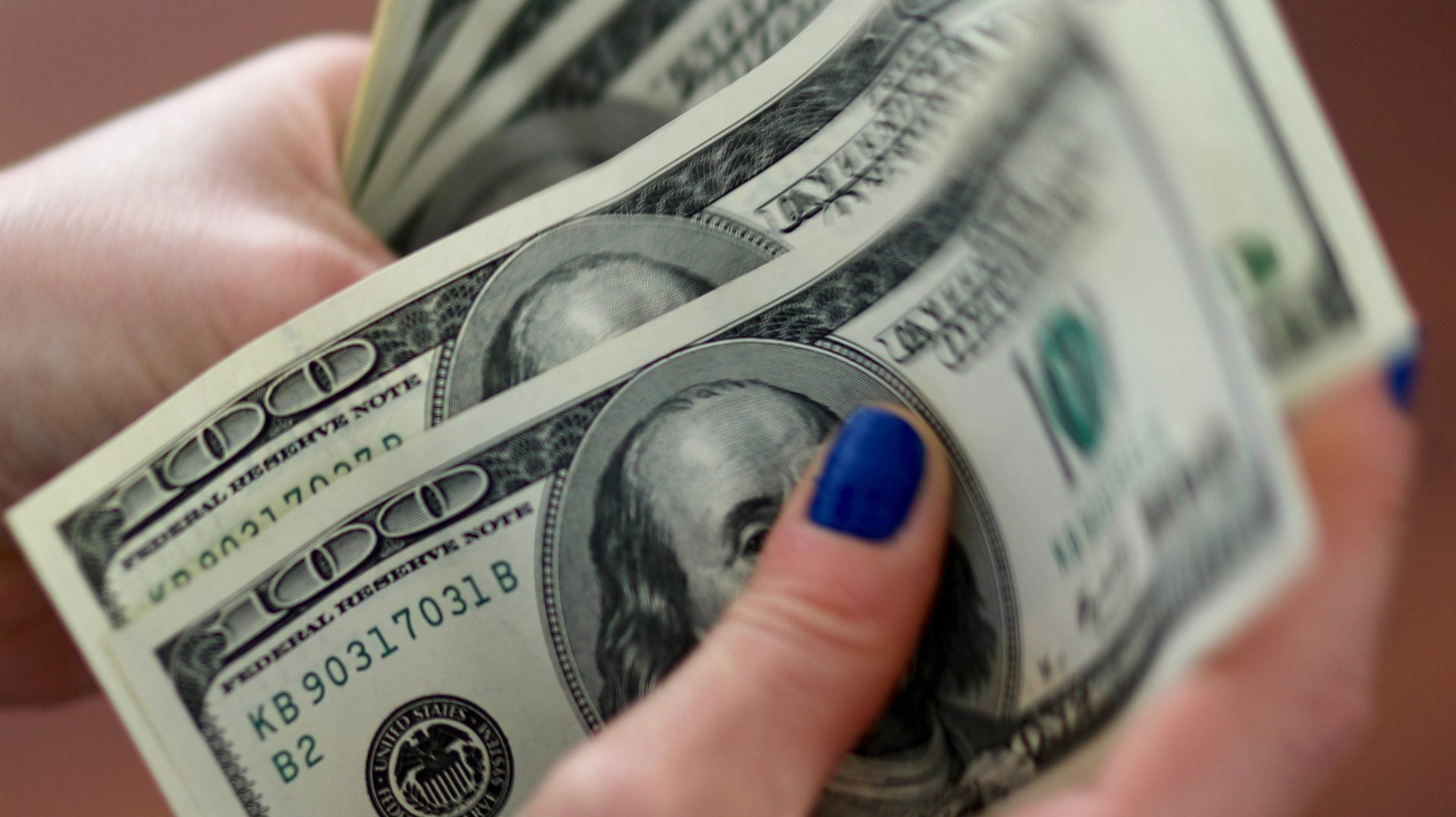Why cash will be obsolete within a decade
Central banks like the US Federal Reserve are printing more paper money than ever. But Cornell University economics professor Eswar Prasad, who published a new book on the future of money, thinks cash has outlived its usefulness.


Central banks like the US Federal Reserve are printing more paper money than ever. But Cornell University economics professor Eswar Prasad, who published a new book on the future of money, thinks cash has outlived its usefulness.
Prasad’s book, The Future of Money: How the Digital Revolution is Transforming Currencies and Finance, is a sweeping survey of fintech, crypto assets, and central bank digital currencies (CBDCs). Prasad, who has also written books about the Chinese renminbi and the US dollar, says the research that went into writing it has made him an optimist about our digital future.
The former head of the International Monetary Fund’s China division thinks innovation will bring many more people into the formal financial system, making these services cheaper and available even to people with low incomes. Prasad acknowledges there are hazards, such as the loss of privacy when everything we buy has a digital footprint, and the potential for some to be disenfranchised as physical cash is replaced with digital payments. But, overall, he’s betting the digital financial future will be better than the one we have known.
Quartz spoke to Prasad about cash, digital payments, and CBDCs. The conversation was edited and condensed for clarity.
Quartz: Your book is a wide survey of technology and changes in finance. How will these developments influence the world?
Prasad: These changes have enormous potential to democratize finance. That is, to make a broad range of financial products and services, including digital payments, accessible to the masses. This includes low-income people in developing countries who may have access to a mobile phone but have very low income levels. But it also includes the unbanked and the under-banked who constitute a fairly large number, even in an advanced economy such as the US.

We are beginning to see digital payments become the norm in a large number of countries, ranging from very advanced economies to low-income economies. And while these changes have enormous benefits, they also mean that the government could in some sense become somewhat more intrusive into society. We could lose whatever few vestiges of privacy that we now have.
Now certainly there are new technologies emerging that could allow for the use of, say, digital central bank money or even decentralized cryptocurrencies issued by private parties that still provide some degree of transaction anonymity. Still, I think the reality is that anything that leaves a digital trace is ultimately going to compromise our privacy.
But that is the somewhat darker side of all of this. I think it’s worth emphasizing that the benefits are likely to be enormous in terms of providing easy access to capital for small-scale entrepreneurs, giving easy access to basic banking programs such as credit and saving products for low-income households, and to be able to do a lot of this without necessarily having a typical credit card or bank account, which in some cases requires a higher level of income. Plus, of course, the other big change on the horizon is that international payments are likely to become much easier.
People are using digital payments more and more, but some central banks, and the US Federal Reserve in particular, are also printing more physical cash than ever. What’s going on?
It is an intriguing phenomenon that the stock of currency in circulation in the US and a few other economies is rising at a time when people seem to be using cash less.
The tangibility of cash is certainly a very attractive feature. Things that are digital seem ethereal at one level. So I think there is some degree of security people have in holding cash.
As I point out in the book, there is this element that cash does come through in a pinch when you have natural disasters or other phenomena that cause communications systems to break down because of electricity failures and so on. So what characterizes the doomsday demand for cash may arrive at a time when people see a lot of troubling things happening around them.
It’s also this element that cash provides anonymity, which is certainly exploited by those who intend to use it for nefarious and illicit purposes. And this is one of the drawbacks of cash from the perspective of governments, that it allows central bank-issued money to be used for purposes such as money laundering, terrorism financing, and other illicit activities. And it also allows economic activity that be legitimate to flourish in the shadows, which means it’s no longer part of the tax net and it reduces government revenues.
But these are phenomena that we have seen for a while. The demand for high-denomination banknotes around the world has gone up quite a bit, suggesting that people seem to be holding on to cash as a store of value rather than as a medium of transactions or medium of exchange. Of course, it is hard to determine how much of the increase in cash holdings is accounted for by illicit activities, but it’s hard to imagine that the rate of cash usage in illicit activities has jumped during the pandemic. So I think it’s really people going back to what they feel comfortable with, which is holding cash even while they use it less.
Does cash go away?
It’s hard to imagine cash remaining a viable medium of exchange in the world once you get past the next five to 10 years, depending on which country you’re talking about. And I think the reason for that is that even if consumers prefer to use cash, for businesses, using cash is a hassle. They have to handle cash. They have to make change. They have to store cash. Cash is vulnerable to loss and theft. So we’re already seeing businesses around the world, you know, preferring to move to digital forms of payments. So I think both on the side of businesses and consumers, the desire to use cash is going to decline even faster once they have more options available. So it’s just very difficult to see a scenario in which cash has a viable future.
🎧 For more intel on the future of money, listen to the Quartz Obsession podcast episode on cash. Or subscribe via: Apple Podcasts | Spotify | Google | Stitcher.
Does that mean we will be using central bank digital currencies?
That depends to some extent on how the CBDC is structured. So, for instance, if a digital dollar was structured in a way that each of us had essentially a central bank digital wallet that we could use very easily for transactional purposes, if that was interoperable across payment systems, meaning no matter what payment system a merchant might have, it is easy to make payments…that will certainly, I think, impel us towards using CBDCs.
Of course, credit-card and debit-card companies—and credit-card companies in particular—have been very effective at maintaining their business, and they essentially do it by bribing us. So when you use a CBDC in a transaction, you pay for it and the money is gone. With a credit card you pay later, plus the credit-card company gives you some money back or perhaps some points on your mileage or hotel account. So I think at least in the US, this is why we see credit cards still retaining a fairly important role.
But I think increasingly they’re going to be trying to eschew the use of cash and shifting to digital payments, either through a CBDC or through one of the existing electronic forms of payment. And certainly, the creation of the CBDC is likely to force other sorts of payment providers, including debit and credit cards, Apple Pay, PayPal and so on, to become much more efficient, reduce their costs. So we could at some level be moving into a glorious future of very easy, low-cost digital payments.
Now that you’ve finished your book and done this wide survey, it sounds like you are an optimist. Is that fair to say?
I’m quite optimistic. I think these new technologies hold enormous promise. Like I mention in the book, we shouldn’t go into this with our eyes blinkered and assume that technology will fix all problems. There are not just risks but also issues, broad issues about what it means to live in a society where payments are only digital, and where the central bank may end up having an even more intrusive role in our society and our lives. I think you need to have conversations about these things at a societal level rather than viewing these as merely economic or technocratic issues.
And I also fear that while there is a promise of democratizing finance and making peoples’ lives better, there is also the risk that many of these benefits and gains might accrue to those who are already economically privileged. There are fundamental problems, such as unequal digital access, lack of financial literacy, that might leave us in a situation where the benefits go to a select part of the population and the risks are accrued by a very small segment of the already economically vulnerable. So I think there is a lot to hope for and a few things to fear as well.